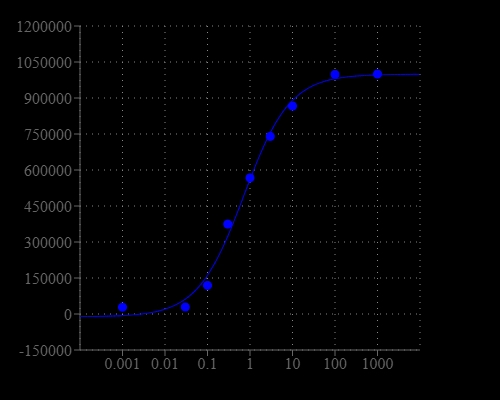Screen Quest™ Luminometric Calcium Assay Kit
Calcium flux assays are preferred methods in drug discovery for screening G protein coupled receptors (GPCR). This kit uses a highly calcium-sensitive and membrane-permeable coelenterazine analog as a calcium indicator for the cells that are transfected with apoaequorin gene. Aequorin is a calcium-sensitive bioluminescent protein from the jellyfish Aequorea victoria that has been used extensively as a calcium indicator in cells. The aequorin complex emits blue light when bound to calcium ions. The luminescence intensity is directly proportional to the Ca2+ concentration. Our coelenterazine-based kit is much more sensitive than the fluorescence-based calcium assay kits (such as Fluo-4, Fluo-3, Calcium-3 and Calcium-4). This kit provides an optimized assay method for monitoring G-protein-coupled receptors (GPCRs) and calcium channels. The assay can be performed in a convenient 96-well or 384-well microtiter-plate format and easily adapted to automation. It might be useful for monitoring of intracellular calcium mobilization in a specified compartment given that recombinant apoaequorin proteins can now be targeted to specific organelles, cells and tissues.


| Catalog | Size | Price | Quantity |
|---|---|---|---|
| 36305 | 10 Plates | Price | |
| 36306 | 100 Plates | Price |
Storage, safety and handling
| H-phrase | H303, H313, H333 |
| Hazard symbol | XN |
| Intended use | Research Use Only (RUO) |
| R-phrase | R20, R21, R22 |
| UNSPSC | 12352200 |
Instrument settings
| Luminescence microplate reader | |
| Recommended plate | Black wall/clear bottom |
| Instrument specification(s) | Bottom read mode/Programmable liquid handling |
Documents
Contact us
| Telephone | |
| Fax | |
| sales@aatbio.com | |
| International | See distributors |
| Bulk request | Inquire |
| Custom size | Inquire |
| Technical Support | Contact us |
| Request quotation | Request |
| Purchase order | Send to sales@aatbio.com |
| Shipping | Standard overnight for United States, inquire for international |
Page updated on January 5, 2026
